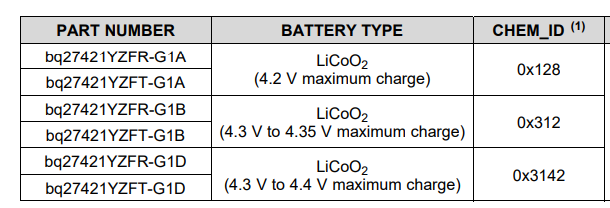Other Parts Discussed in Thread: BQSTUDIO, EV2400, GPCCHEM, BQ27Z561, BQ27Z561EVM-011, BQ27220, BQ27Z746, BQ40Z50, BQ28Z610,
I got the log in BQStudio.
An electronic load was used to discharge each with a constant current.
The capacity of the battery used is 400mAh.
See attached image.
The plot is the "StateOfChg" value.
Connection uses EV2400.
If the consumption current is small, the discharge curve is obviously different.
Where should I change the setting when using with low current consumption?
Only 5 points of "Quick Configuration" in "Parameter Q&A" were changed this time.
(design voltage/nominal capacity/nominal energy/maximum taper current/empty voltage)



